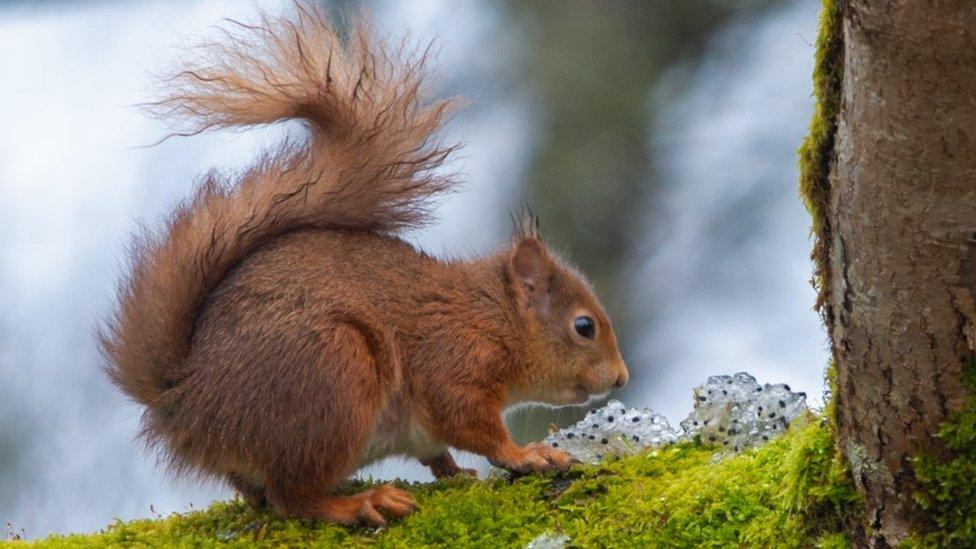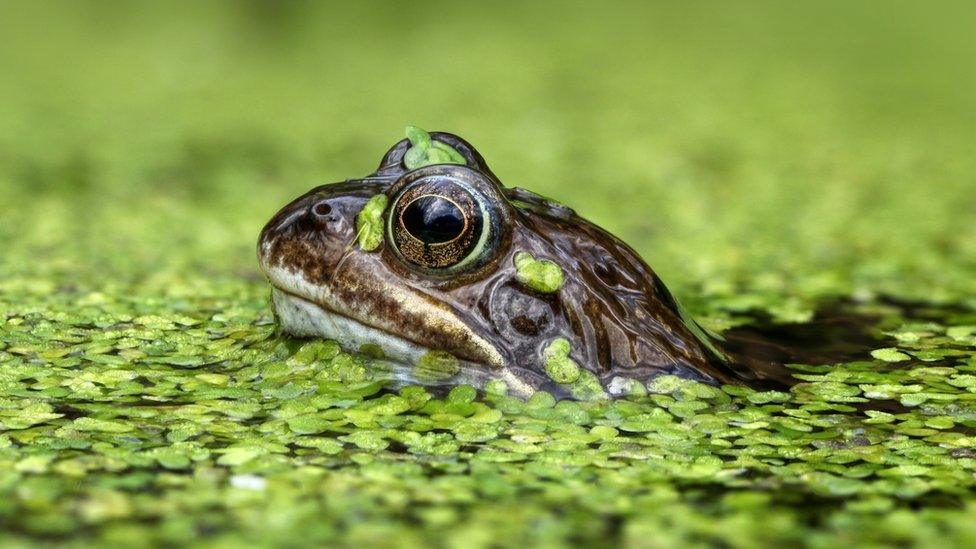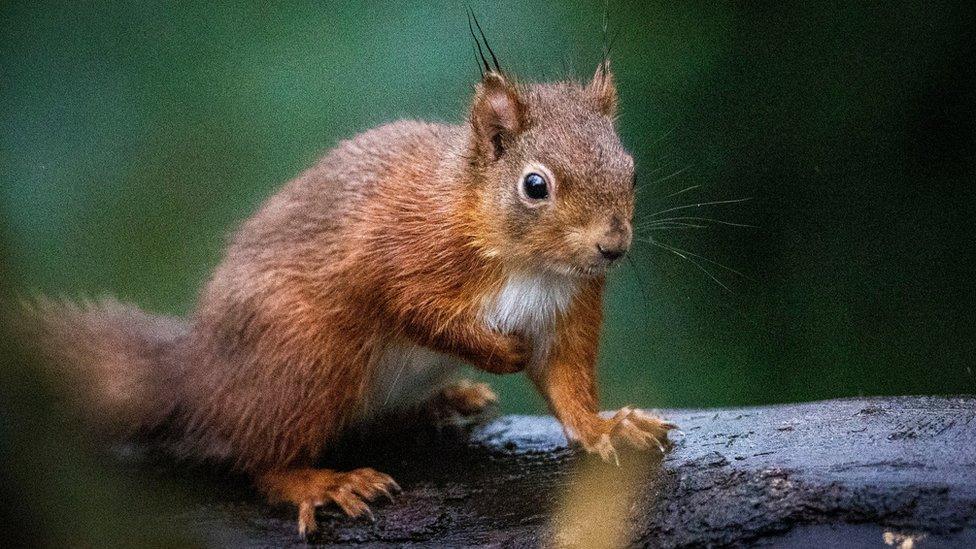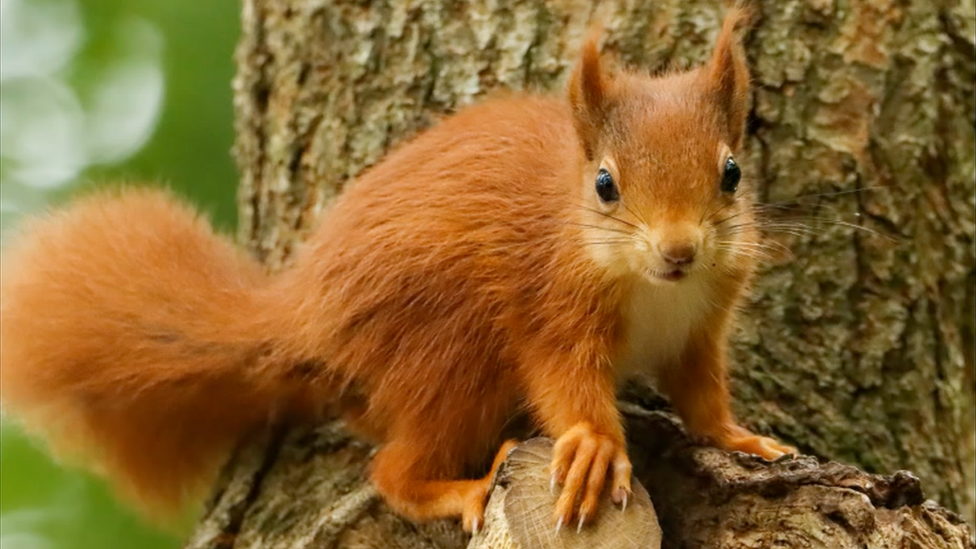Red squirrel photographed eating frog spawn up tree
- Published

The squirrel with its unusual meal was spotted in Loch Lomond and Trossachs National Park
Conservationists have been intrigued by a sighting of a red squirrel eating frog spawn about 3m (10ft) up a tree.
Wildlife photographer Dave Bird spotted the animal, and its unusual meal, at Strathyre in Loch Lomond and Trossachs National Park.
Saving Scotland's Red Squirrels conservation project said it had not seen the behaviour before, but pointed out the animals were omnivores.
One theory is the eggs were left by a bird after it had eaten a frog.
A spokeswoman for Saving Scotland's Red Squirrels said: "We know red squirrels are omnivores, taking things as they find them."
She said the jelly-like spawn may have been inside a frog that was caught by a bird and then eaten in the tree, with the eggs leftovers from the bird's meal.
Depending on the time of year, the diet of red squirrels usually involves pinecone seeds, hazelnuts, buds on plants, insects and occasionally bird eggs.

A frog caught and eaten by a bird could be the reason the spawn was in the tree
The Scottish squirrel project has been notified by UK Squirrel Accord, a partnership of conservation and forestry organisations, of a record from Devon of frog spawn being found in a tree.
The Strathyre sighting comes as Saving Scotland's Red Squirrels publishes its final report on its five-year Developing Community Action project, external.
According to the report, grey squirrel control and monitoring efforts have increased dramatically across Scotland with red squirrels remaining and gaining ground in significant areas since 2017.
Grey squirrels are an invasive non-native species that outcompete native reds for food and also carry a virus called squirrelpox.
The report recommends continued professional efforts to control greys.
- Published21 January 2023

- Published4 April 2023
